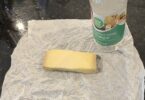Rising To The Top – Alternative Bubbly for the Holiday Season
by Ertan Sener
It amazes me that a year has flown by, and I find myself writing the wine column for the holiday season already. Thoughts of family gatherings, celebrations with close friends or the dinner party at the neighbor’s house lead to the same question, ‘what should I bring?’ I like to believe that the simple solution in all cases is a nice bottle of wine! This time of year, with all the festive occasions, a glass of something bubbly is always fun, and helps put the “Cheer” in the word “Cheers!” Champagne, the king of sparkling wines, is a wine that can fit all occasions. Although, sometimes the price of champagne might not be the answer for all functions you’ll be attending during a busy holiday season. Well, what to do? Believe it or not, there are some amazing alternatives to fill a glass with a lively liquid. I would like to discuss three sparkling options as we search for some alternative bubbly.
Only sparkling wine from the Champagne region of France, by law, can be called champagne. This does not deter other producers throughout France from creating a wine that will tickle one’s nose and dance on their palate. So, what to call these beauties? The term Crémant is used to describe a quality sparkling wine. Added to the title is where the wine is from, or AOC. Like champagne, the grapes used to create these wines might be
Chardonnay and/or Pinot Noir, but other grapes can be used like Chenin Blanc in the Loire Valley. Here is a list of a few of the Crémant wines areas and how it will be listed on the label: Crémant de Alsace, Crémant de Bordeaux, Crémant de Bourgogne, Crémant de Die, Crémant du Jura, Crémant de Limoux, Crémant de Loire and Crémant de Luxembourg. The grape varieties will differ depending on where the wine comes from, but one can be assured that it will be a fine quality, dry sparkling wine. They are fun to try as they can help narrow in on a style and a producer that is truly enjoyable. Sparkling wine can be found in a number of countries that have adopted a tradition for the given regions. Now, let’s travel to two countries that have developed their own quality sparkling wine.
Italy has an amazing wine making tradition and history, as well as having hundreds of grape varieties that are used to make particular wines from particular areas. Up in
Northeastern Italy we find the Veneto Region. Here, grapes are magically turned into a beautiful sparkling wine call Prosecco. The grape variety was also known as Prosecco, but over recent years, with new Prosecco wine making laws, ancient grape variety names have been reintroduced. Names such as: Glera, Balbi, Serpina, and Tondo. These new laws have also given higher quality designation levels to particular growing regions. The new quality designations are: Prosecco DOC, Prosecco DOC Treviso, Valdobbiadene Prosecco Superiore DOCG, and the two top levels, Cartizze DOCG and Rive de DOCG. These last two are only produced by a handful of wineries. Prosecco can come in different styles, as well. The full sparkling, Spumante and the lightly sparkling, Frizzante. No matter which style, Prosecco aims to please with its light mouth feel and flavors of crisp apple with a finish clean. A perfect alternative bubbly, that will still eagerly dance in the glass.
Spain is proud of their lively liquid they call Cava. Cava was originally known as Champan, the Spanish translation of the French word Champagne, but after some legal conflict with France, they changed the name to Cava (meaning “cellar” in Catalan.) Well, that is where the conflict ended, and now Cava is a sought after Sparkler for any occasion. There is Cava production all over Northern Spain and actually around
159 official producers are authorized to label their wines with the Cava designation or DO. In order to be called Cava, the wine must be made with the Champagne Method (Méthode Champenoise) or else it cannot have the word Cava on the label. There are three main indigenous grape varieties that are used to make Cava: Macabeo, Parellada, and Xarel-lo, although, Pinot Noir and Chardonnay are used by some of the top Cava producers. There are different taste profiles for each Cava producer, but overall the wines can be dry, yet fruity and crisp, showing some lovely orchard fruit and even possibly subtle notes of tropical fruit.
This is just a short list of some of my favorite bubbles for any occasion. But please, don’t stop there. There are a vast number of other fun bubbles that are made all over the world, including the United States that are of fantastic quality. A little bubbly can turn any gathering into a festive occasion, with the pop of the cork to the chorus of bubbles that sing from the glass. Let this holiday season be filled with family and friends and a toast…a toast to fine sparkling wine from around the world! Cheers!
Ertan S. Sener, wine educator, has been seen in Wine Spectator Magazine, and is the buyer/manager at West Side Wines & Spirits. 860-233-1241. www.westsidewines.com







